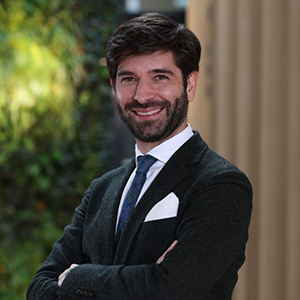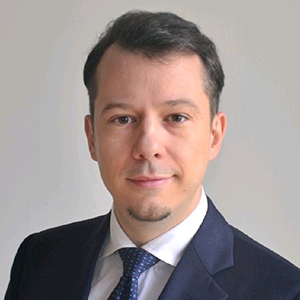Is traditional portfolio construction a thing of the past?

Traditionally, families have chosen to allocate their wealth between equities, fixed income and alternative investments based on expected long-term risk and return profiles. However, amidst elevated global economic uncertainty, this traditional portfolio construction approach can feel unstable and susceptible to rapid regime changes, as seen with the return of high inflation and shift in asset class correlations.
Here, Stanko Milojevic (Head of Asset Allocation) and Georgios Leontaris, (Regional CIO, Switzerland and EMEA) at HSBC Global Private Banking discuss what can be learned from contemporary portfolio construction methods and how to use these lessons to navigate the challenging environment we face.

The 60/40 rule has traditionally been the allocation of choice for balanced portfolios - 60% in equities, 40% in bonds. Is this rule of thumb set to continue in the future?
The 60% equity / 40% bond portfolio is sometimes used a proxy for measuring portfolio returns - even if, in reality, it is rarely used by institutional investors as method of implementing investing decisions. In 2022, a typical 60/40 index fell 17% in 2022, marking one of the worst performances delivered over the last century. But criticism was largely centred on the fact that both equities and bonds declined in the same year and that the damage was amplified as the correction in each major asset was in double-digits. This implied that investors had almost nowhere to hide in a year characterised by inflation and interest rate shocks and geopolitical and energy crises, among other events.
In this environment, investors should naturally look for more modern benchmarks that take into account other asset classes, such as alternatives. Hedge funds and private markets provided an important cushion to returns in 2022 offering lower correlation and better downside protection to traditional assets. Meanwhile, the current environment of sticky inflation and higher rates is also likely to lead to greater dispersion of returns. Higher quality bonds and stocks are likely to remain more resilient than higher-levered assets, but the correlation between bonds and stocks is unlikely to return to negative levels seen in the post-Global Financial Crisis world. Exposure to active management is becoming more relevant for enhancing risk adjusted returns.

Campden Wealth’s European Family Office Report 2022 found that, in the wake of the pandemic and facing soaring inflation, increasing interest rates, collapsing stock markets and imminent recessions, Europe-based family offices are proactively adopting inflation-mitigating investment strategies, with private equity representing 27% of the average family office portfolio. To your mind, is this strategy likely to remain common practice for the medium to long term?
Although headline inflation has come down from the peaks in major economies, underlying price pressures still remain stubborn. Tight labour markets create the risk of further wage driven cost pressures, whereas services-driven inflation remains too hot in the eyes of Central Bankers. Although interest rates have already been hiked substantially, markets are still pricing in further rates hikes, especially in Europe and the UK, whereas expectations for rate cuts have been pushed further out the line given that inflation is not expected to fall towards target levels soon. For this reason, investors continue to look for inflation-mitigating investment strategies, and private equity has retained its appeal given the potential for generating returns well above inflation.
Private equity (PE) has traditionally performed well even in periods of downturns, and there are several reasons that this should remain the case going forward. The long-time horizon and progressive drawdown of capital allows managers to be patient, scaling up investors as valuations become less demanding. The ability to seek out investments in areas such as distressed markets should also gain appeal in the coming months. The less liquid nature of the asset class provides smoother returns that can also contribute to lower mark-to-market volatility of holistic investments. Many PE strategies are value oriented, and this also offers an advantage to investors looking for cheaper alternatives to growth-oriented holdings where valuations have recently rebounded.
Meanwhile, many clients have been rethinking allocations in light of more competitive returns on cash but also position for the eventuality of elevated policy rates in the near term. In our view, general managers focusing on top-line growth and margin expansion remain better positioned than those focused on multiple expansion, so investors may need to differentiate across investments going forward.
An above-average allocation to private equity or willingness to add to existing holdings is often part of conversations with family offices, although the final weight should be closer in line with strategic target weights given the longer-term investment horizon of the asset class.

The same report found that of all investment risk currently troubling family offices, inflation is the most commonly cited (according to 78% of respondents), with increasing geopolitical tensions (61%) and rising interest rates (54%) also proving to be ongoing worries. Popular strategies to mitigate inflation risk include increasing exposure to equities (49%), real estate (33%), and commodities (33%), and reducing the duration of bond portfolios (28%). Do these continue to be sensible and safe bets for long-term yields?
After being dominated by consistent upside surprises in consumer price inflation last year, we have instead seen asset price inflation in 2023. Staying invested has been the right strategy this year, as the falling inflation, macro and earnings resilience, as well as the expectation for peak policy rates, this summer have contributed to positive investment returns. Investors with a long-term time horizon should continue to look to equities given that improved capital market assumptions of around 7%-10% should deliver positive inflation adjusted returns. In the nearer term, they may overweight quality as a style, given that lower debt burdens should provide some insulation to higher borrowing costs, whereas the ability to pass on elevated input costs should also contribute to more dispersion among companies.
Stronger than expected inflation did not bode well for fixed-income assets last year, however the direction of travel and prospect of peak rates has helped support a return of investment flows this year. Investors are increasingly adding to bond positions on the expectation of greater diversification benefits, in addition to meeting wealth preservation and capital appreciation objectives. The ability to lock-in elevated yields should help overcome the temptation of parking cash in money market funds, whereas the safe haven appeal of high-quality bonds has also been a trigger for larger allocations to the asset class.
Commodities can provide protection to inflation, although the degree of demand will influence the direction for industrial metals in the near term, elevated real yields can cap the strength of precious metals whereas supply constraints can add a floor to oil prices for now. On real estate, we remain neutral overall, yet have a clear preference for logistics, warehousing and prime property over commercial real estate thanks to long term structural drivers which remain at play.

Will alternative investments play a larger role in families’ portfolios in the future? If so, what do you think is the appeal of such investments?
Family office surveys point towards firm demand for alternatives as a structural holding in portfolios. The illiquidity premium, decorrelation benefits and experience of active managers has contributed to the appeal of the asset class as geopolitics, inflation and rates represent a recurring topic of discussion among investors. Tighter regulatory standards have equally contributed to the rise in popularity of private markets as a way of securing new and diversified sources of fundraising for companies.
AI and machine learning tools are increasingly being used in predicting how the markets will turn. Is now the time for families to adopt these cutting-edge technologies? Does gut feeling and experience still play a part in successful portfolio allocation?
The adoption and use of machine learning more of an incremental process rather than something revolutionary. Any systematic, data-driven model used for prediction can be considered a machine-learning tool. A variety of statistical methods have been used in the industry for decades in this way, long before machine learning became a popular term. Systematic hedge funds are particularly well versed in applications of machine learning, and some of them have built impressive financial databases that they continue to leverage to train and re-train their predictive models. Due to the competitive nature of alpha generation, the most practical way of leveraging machine learning for family offices is on a delegated basis – by allocating to systematic hedge funds. In the world with so much data and computing power, we’d be cautious about investment professionals relying on “gut feeling” as an important driver of their decisions. That said, experience is certainly indispensable in investing and alpha generation, and we’re seeing great synergies between experienced investors and younger team members with scientific backgrounds. We've been promoting this approach within HSBC for several years now. Within the group, we run a range of models for sentiment analysis, market prediction and natural language processing which help us make sense of the global markets and support our investment decision-making and our systematic trading strategies on an ongoing basis.
When it comes to capital market assumptions, what kind of long-term returns can families expect going forward?
The return of inflation brought back macro volatility and caused tectonic moves in financial markets post-COVID. This return to the “old normal” means that we’re also seeing a big reset in our estimates of long-term returns across the asset classes. A long period of low returns in fixed income was followed by a substantial sell-off add a historical bond market re-pricing over the past three years. With rates now at levels not seen since 2008 and inflation rates finally normalising, prospective returns from fixed-income investment look better than they ever have since the great financial crisis. For the next ten years, our estimate of the term premium is positive in most regions in spite of the inverted yield curves. Credit spreads are at attractive levels in the context of relatively low expected defaults, which allows investors to capture additional returns. Asian high yield credit is looking particularly attractive with the expected return of 7.0% annualised. Across global equities, we expect the total return of 7.9% for developed and 10.2% for emerging markets, which is close to long-term averages historically. Overall, expected returns from diversified portfolios now look much better than they did around the turn of the decade, and in line with historical norms.







